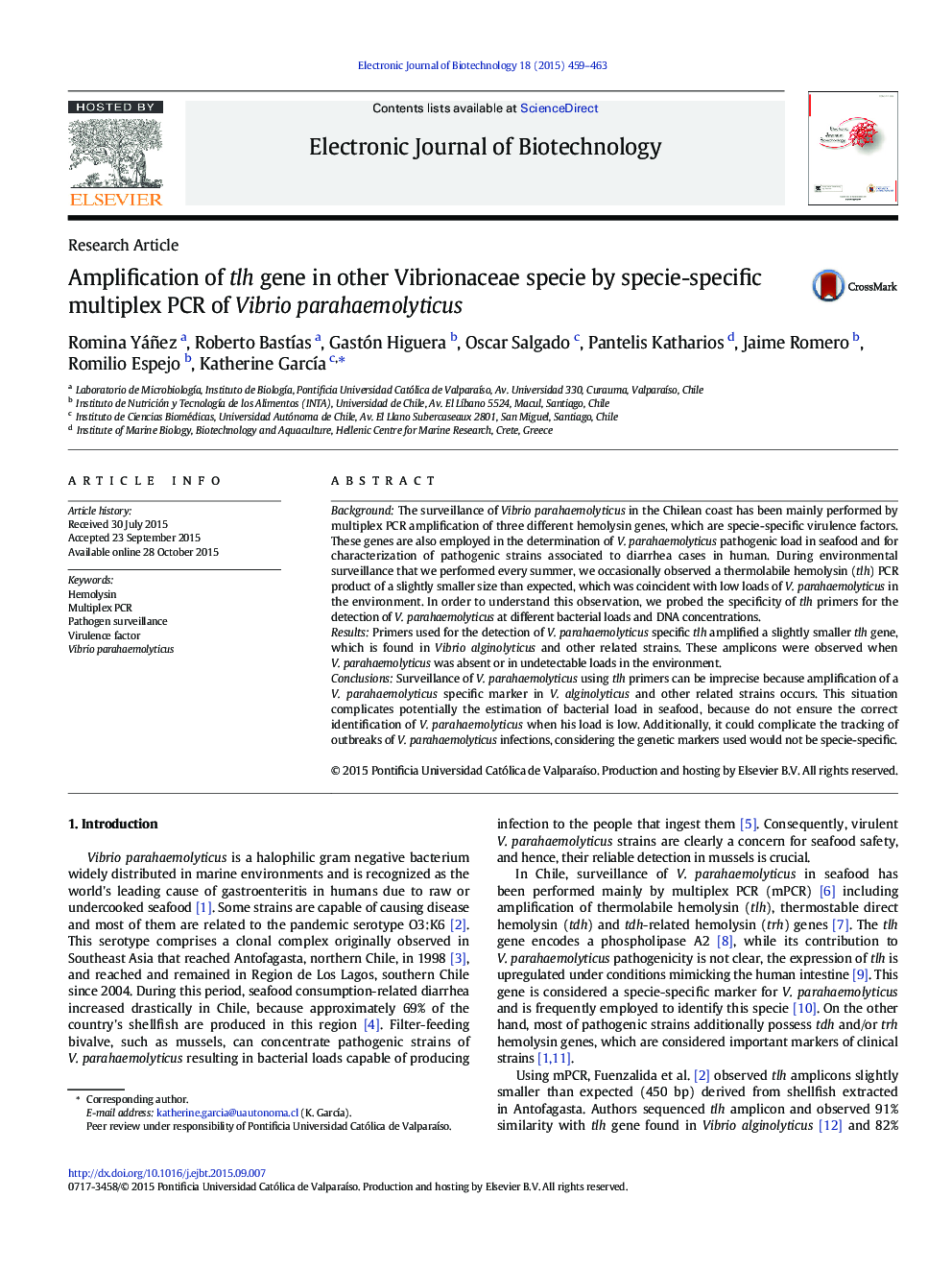| کد مقاله | کد نشریه | سال انتشار | مقاله انگلیسی | نسخه تمام متن |
|---|---|---|---|---|
| 200765 | 1424346 | 2015 | 5 صفحه PDF | دانلود رایگان |

BackgroundThe surveillance of Vibrio parahaemolyticus in the Chilean coast has been mainly performed by multiplex PCR amplification of three different hemolysin genes, which are specie-specific virulence factors. These genes are also employed in the determination of V. parahaemolyticus pathogenic load in seafood and for characterization of pathogenic strains associated to diarrhea cases in human. During environmental surveillance that we performed every summer, we occasionally observed a thermolabile hemolysin (tlh) PCR product of a slightly smaller size than expected, which was coincident with low loads of V. parahaemolyticus in the environment. In order to understand this observation, we probed the specificity of tlh primers for the detection of V. parahaemolyticus at different bacterial loads and DNA concentrations.ResultsPrimers used for the detection of V. parahaemolyticus specific tlh amplified a slightly smaller tlh gene, which is found in Vibrio alginolyticus and other related strains. These amplicons were observed when V. parahaemolyticus was absent or in undetectable loads in the environment.ConclusionsSurveillance of V. parahaemolyticus using tlh primers can be imprecise because amplification of a V. parahaemolyticus specific marker in V. alginolyticus and other related strains occurs. This situation complicates potentially the estimation of bacterial load in seafood, because do not ensure the correct identification of V. parahaemolyticus when his load is low. Additionally, it could complicate the tracking of outbreaks of V. parahaemolyticus infections, considering the genetic markers used would not be specie-specific.
Journal: Electronic Journal of Biotechnology - Volume 18, Issue 6, November 2015, Pages 459–463